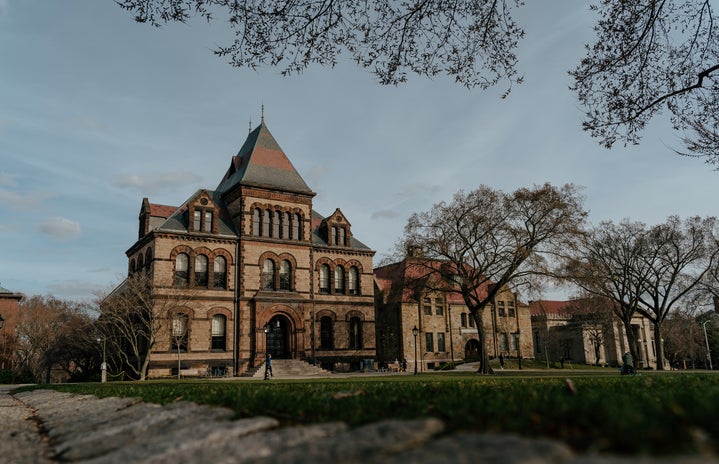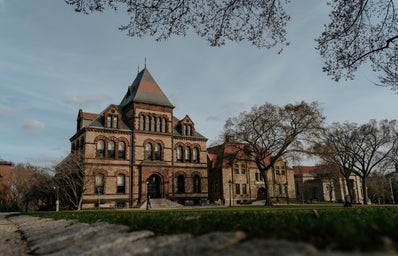If you’ve been on the internet at all since 2020, you’ve probably heard of the term ‘dark academia’. You might even know the most basic things associated with it; tweed, oversized blazers, black coffee, and books. And you would be correct, those things are very commonly associated with the dark academia aesthetic, but the subculture is so much more than that.
Dark academia is defined as an aesthetic that takes inspiration from and is concerned with the arts (especially poetry and writing), higher education, reading, and just the love of learning in general. The aesthetic is associated with all things to come out of classical Greece, such as the authors/ philosophers and the architecture. You’ll also see heavy inspiration from the gothic era floating around in the aesthetic.
Dark academia first started to take off in 2020 when the aesthetic went viral on TikTok, but it dates back in internet history to 2015 Tumblr. It truly started to gain traction with the publication of Donna Tart’s “The Secret History” all the way back in 1992, but remnants of the aesthetic can be traced back to before then, it just didn’t have a name. It started to take off in 2020 due to its romanticization of learning and school institutions, something that had been taken away from students during the pandemic. And if I had to guess, the revival of interest in “Harry Potter” around this time had something to do with the aesthetics’ jump in popularity, as “Harry Potter” has a lot of the key elements of dark academia.
However, it’s the ‘dark’ part of dark academia that makes it so tied to fall. The ‘dark’ refers to the more gothic, borderline spooky elements of academia, especially considering the heavy inspiration the aesthetic takes from the gothic period. ‘Dark’ also refers to the obsessed artist/student trope that is often found in the books that are core to the aesthetic.
Speaking of books, I already mentioned “The Secret History”, but other books that are considered essential to the aesthetic are “If We Were Villains” by M.L Rio, “Bunny” by Mona Awad, and “Ace of Spades” by Faridah Àbíké-Íyímídé. These books all take place in an academic setting and feature students who are very dedicated to what they love, to put it lightly.
The fashion of the aesthetic also makes it fit perfectly into fall. Major key components of the fashion are blazers, loafers, sweater vests, and plaid everything. Dark academia fashion is almost all neutral/ earth tones, which are colors usually associated with fall. The preppy style plays into the elitism and the scholarly aspect of the aesthetic. While preppy style can be worn in any season, the emphasis on the darker color palette is what directly ties it to fall. This is in contrast to light academia, where the core values of the aesthetic are still there, but the fashion is much lighter, with a focus on lighter fabrics and a light neutral color pallet.
Because of its heavy focus on scholarly settings, dark academia has been bound to fall, due to school starting in the fall and students being more motivated to study in the fall. Many people have found that dark academia has helped them discover or rediscover their love for learning due to the aesthetics’ emphasis on school. The whole point of dark academia, or just academia as a whole, was to get people excited to learn, and to get people to fall in love with it.


